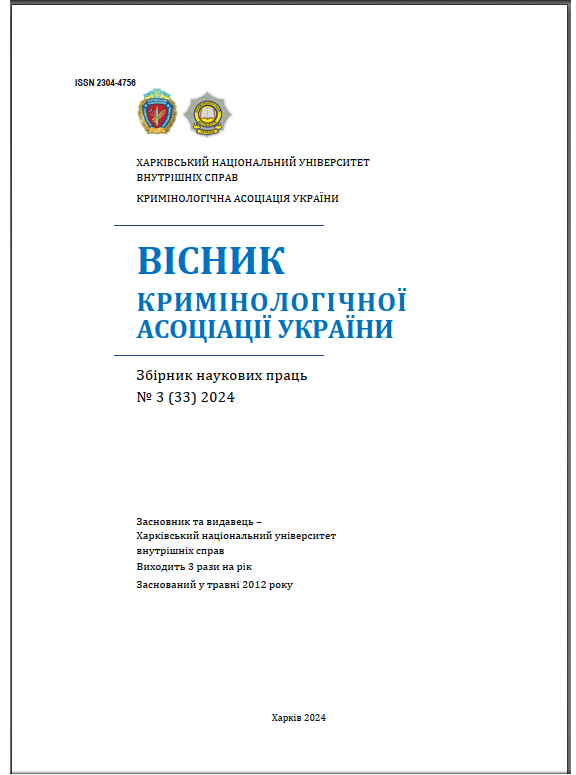FEATURES OF DETECTING AND OVERCOMING COUNTERMEASURES AT THE STAGE OF DETECTING SIGNS OF SELFISH AND VIOLENT CRIMES
Main Article Content
Abstract
Based on the generalization of theoretical positions, and the analysis of the
materials of law enforcement practice, this study substantiates the position that
the purpose of identifying signs of a criminal offense, opposing the investigation,
and trial is the intention to avoid criminal liability or at least mitigate the
punishment. It is emphasized that any obstruction to achieving the goals of
criminal and judicial proceedings, regardless of whether they are permissible by
law or illegal, should be considered as countermeasures, and specific actions
implemented to obstruct criminal procedural activity should be subject to
objective criminal law assessment. They may be recognized as a sufficient basis
for bringing a person to criminal responsibility. It is argued that counteraction is
possible both through the implementation of specific actions and inaction, which,
for example, may consist in not appearing when summoned by the investigator,
or prosecutor; refusal to testify; concealment from pre-trial investigation bodies
and the court, etc. Typical sources of information that become objects of influence
as a countermeasure have been established, the circumstances indicating the
likelihood of countermeasures have been summarized, and the stages of law
enforcement agencies' activities on the way to countermeasures from the
moment of detection of the signs of a crime have been revealed.
Article Details

This work is licensed under a Creative Commons Attribution 4.0 International License.
